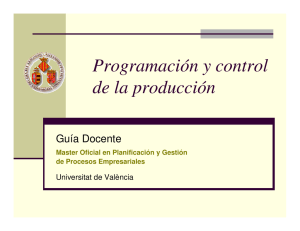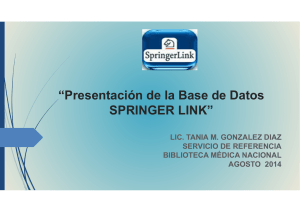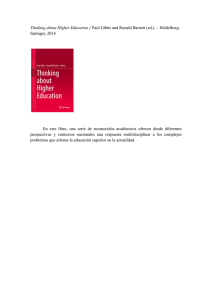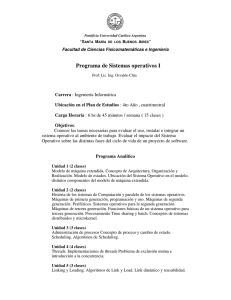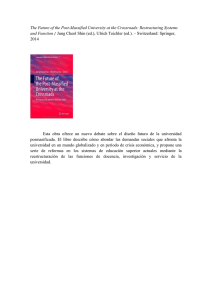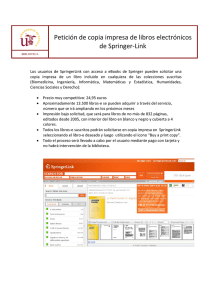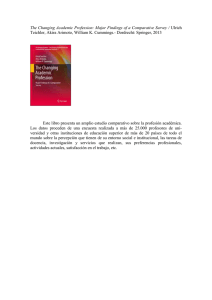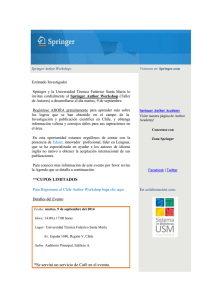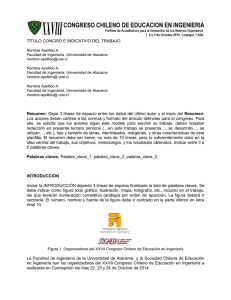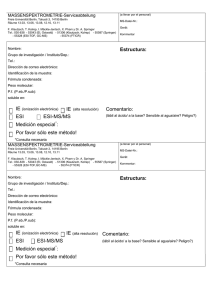Planificación y Programación de la Producción
Anuncio
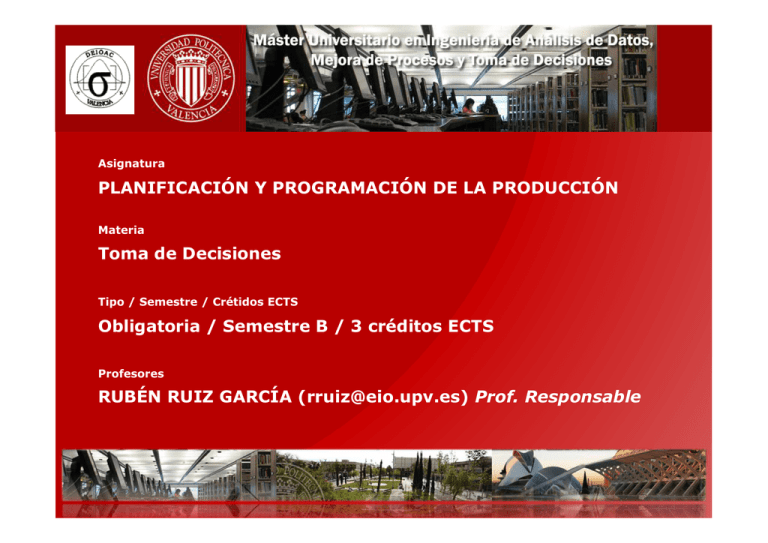
Asignatura PLANIFICACIÓN Y PROGRAMACIÓN DE LA PRODUCCIÓN Materia Toma de Decisiones Tipo / Semestre / Crétidos ECTS Obligatoria / Semestre B / 3 créditos ECTS Profesores RUBÉN RUIZ GARCÍA ([email protected]) Prof. Responsable PLANIFICACIÓN Y PROGRAMACIÓN DE LA PRODUCCIÓN Objetivos: 1. 2. 3. 4. 5. 6. Presentar al alumno la problemática de Planificación y Gestión de Sistemas Productivos. Analizar los diferentes elementos implicados en la Cadena Logística y su relación con los métodos de gestión. Conocimiento de las etapas del Sistema de Planificación y Control de Operaciones incidiendo en sus entradas, salidas y sus relaciones. Definir los conceptos generales asociados a la gestión de materiales de demanda dependiente e independiente Determinar qué sistema de Gestión de Producción es más adecuado en función del tipo de sistema productivo. Introducir al estudiante en el problema de la programación de la producción de forma que sea capaz de identificar los problemas, en su relación con otros procesos de la empresa, caracterizar sus principales componentes, construir modelos, proponer procedimientos de resolución y/o utilizar el software existente. PLANIFICACIÓN Y PROGRAMACIÓN DE LA PRODUCCIÓN Temario: 1. INTRODUCCIÓN A LA PLANIFICACIÓN Y PROGRAMACIÓN DE LA PRODUCCIÓN 2. PLANIFICACIÓN DE LA PRODUCCIÓN 3. INTRODUCCIÓN A LA PROGRAMACIÓN DE LA PRODUCCIÓN 4. MÉTODOS HEURÍSTICOS PARA PPP* 5. MÉTODOS EXACTOS PARA PPP 6. MÉTODOS METAHEURÍSTICOS PARA PPP 7. RESOLVIENDO PROBLEMAS DE PPP EN LA PRÁCTICA * PLANIFICACIÓN Y PROGRAMACIÓN DE LA PRODUCCIÓN PLANIFICACIÓN Y PROGRAMACIÓN DE LA PRODUCCIÓN BIBLIOGRAFÍA BÁSICA : • Framinan, J. M., Leisten, R. y Ruiz, R. (2014) “Manufacturing Scheduling Systems. An Integrated View on Models, Methods and Tools” Springer. • Pochet, Y. y Wolsey, L. A. (2006) “Production Planning by Mixed Integer Programming” Springer • Michael Pinedo (2012) “Scheduling: Theory, Algorithms, and Systems” Springer, cuarta edición. • Michael Pinedo (2009) “Planning and Scheduling in Manufacturing and Services” Springer, segunda edición • Peter Brucker (2007) “Scheduling Algorithms” Springer, quinta edición. • Stephen N. Chapman (2005) “Fundamentals of Production Planning and Control” Prentice Hall. • Kenneth N. McKay y Vincent C. S. Wiers (2004) “Practical Production Control. A Survival Guide for Planners and Schedulers” J. Ross Publishing. PLANIFICACIÓN Y PROGRAMACIÓN DE LA PRODUCCIÓN BIBLIOGRAFÍA COMPLEMENTARIA: • Jay Heizer, Barry Render, Yago Moreno López y José Luis Martínez Parra (2007) “Dirección de la Producción y de Operaciones. Decisiones Estratégicas”. Pearson Educación, octava edición. • Jay Heizer y Barry Render (2008) “Dirección de la Producción y de Operaciones. Decisiones Tácticas”. Pearson Educación, octava edición. • José Antonio Domínguez Machuca, Antonio Álvarez Gil. Miguel Ángel Domínguez Macuca y Santiago García González (1995) “Dirección de operaciones. Aspectos estratégicos en la producción y los servicios”. McGraw-Hill. • José Antonio Domínguez Machuca, Antonio Álvarez Gil. Miguel Ángel Domínguez Macuca y Santiago García González (1995) “Dirección de operaciones. Aspectos tácticos y operativos en la producción y los servicios”. McGraw-Hill. • Sunil Chopra y Peter Meindl (2015) “Supply chain Management: Strategy , Planning and Operations”. Prentice Hall, sexta edición. • Vincent T'kindt y Jean-Charles Billaut (2014) “Multicriteria Scheduling: Theory, Models and Algorithms”. Springer, segunda edición. • Richard W. Conway, William L. Maxwell y Louis W. Miller (2003) “Theory of Scheduling”. Dover publications. • Joseph Y-T. Leung, editor (2004) “Handbook of Scheduling: Algorithms, Models, and Performance Analysis”. Chapman & Hall.
